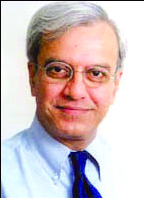Inevitable exposure of the mediocracy

Rajiv Desai
Rajiv Desai is president of Comma Consulting and a well-known Delhi-based columnist
Since 2014, leaders who hold the reins of power are singularly bereft of expertise. They don’t understand the demands of a country that is poor but has unconcealed ambition to become a great power
Mediocracy is a legitimate word. It refers to a system in which members of the dominant group lack the intellect and skills that leadership demands. Applied to government, the word sums up the current dispensation. Since 2014, the men and women who hold the reins of power have proved themselves singularly bereft of expertise. They don’t understand the demands of a country that is poor but has unconcealed ambition to become a great power.
One doesn’t have to be a genius to recognise that atavism has limited appeal. Yet, they widely believe that dogma and bigotry can mobilise sustained electoral support in an aspirational society.
Appeals for support based on religion, a hidden caste agenda, terror-style threats of violence may realise temporary gains, but cannot last in a society that is rapidly modernising.
Regrettably, most in the saffron world actually don’t understand this. They continue to mobilise voters by spewing hate and anger against identified targets. But as results of the last General Election showed, they lost seats. The ruling party’s seats dwindled so significantly, it had to turn to two of India’s most mercurial politicians for support. Most analysts agree it won’t be a lasting arrangement.
Nevertheless, leaders of the ruling party believe divide-and-rule can work. And indeed, it is working for the moment. For instance, in Haryana, the saffron party defied all predictions to win a narrow majority. Many Congress stalwarts who lead the party’s state unit were left with egg on their face. It proves again that the Grand Old Party has what the Americans call “too many chiefs, not enough Indians.”
The phrase emanated in the Wild West of America. As the pioneers headed West from the original 13 colonies of the East Coast, they overran and vanquished hundreds, perhaps thousands, of native Indian settlements. And that was the truth. From sketchy histories of American Indians, it is clear they were overcome not just by superior technology of the white-skinned adventurers but by dismal lack of leadership, notwithstanding what you may have read in comic books about Chief Sitting Bull and various others.
The story of how the West was won underpins American faith in manifest destiny. Portrayed by artists and historians as a glorious achievement, the triumph of “civilisation” over “savagery,” the genocide of Indians and the march West sparked the belief in manifest destiny that underpins the non-negotiable belief that America is great and Americans special. Yet the fact is the natives failed to unite and were ruthlessly massacred by the settlers looking for land and living in the vast undeveloped landmass now known as the United States of America. The narrative of how the West was won is riddled with tales, rumour, gossip. Scholarly treatises came later as men and women of intellect followed cowboys and carpetbaggers.
Similarly, it’s important to understand the saffron projection of Hindutva as the manifest destiny of India. Like American exceptionalism, it is clouded in myth and fantasy. Both beliefs try to dress up greedy adventurism to make it look like nationalism. But bigotry is bigotry, no matter the amount of makeup you apply. People will see through it.
Having said that, the saffronistas have their hopes set on a fourth term, no matter the cost. Never mind the money spent, never mind the threats. The sad truth is they may pull it off again. This time, they’ll be banking on the lethargy of the electorate to see them through. And that, perhaps, is an even more powerful factor than sectarian violence or threat of it.
What can undermine the saffron project for a fourth term is reality. Meanwhile, the propaganda machine churns out fantasies about the domestic economy and India’s standing in the world. The reality is slowed growth and its concomitant joblessness. Soon to follow: unrest and civil disturbances.
They think they can obscure the grim picture by spraying Holi-style colours. Look, here’s red, yellow, green, pink. But behind it, the darkness is spreading. The rising number of vagrants and beggars in cities; the proliferation of slums in outer Delhi… even under the elevated tracks of the Metro; growing disparity manifest in traffic jams in shantytowns that are springing up everywhere. Delhi’s just a step away from being engulfed by gigantic slums like Dharavi.
In his epic Tale of Two Cities, Charles Dickens wrote: “It was the best of times, it was the worst of times, it was the age of wisdom, it was the age of foolishness, it was the epoch of belief, it was the epoch of incredulity, it was the season of Light, it was the season of Darkness, it was the spring of hope, it was the winter of despair…., we had nothing before us, we were all going direct to Heaven, we were all going direct the other way…”
Dickens could well have been writing about India under the mediocracy. Of one thing, we can be sure: few, if any, in the current saffron leadership have read it, let alone understand it.

















Add comment